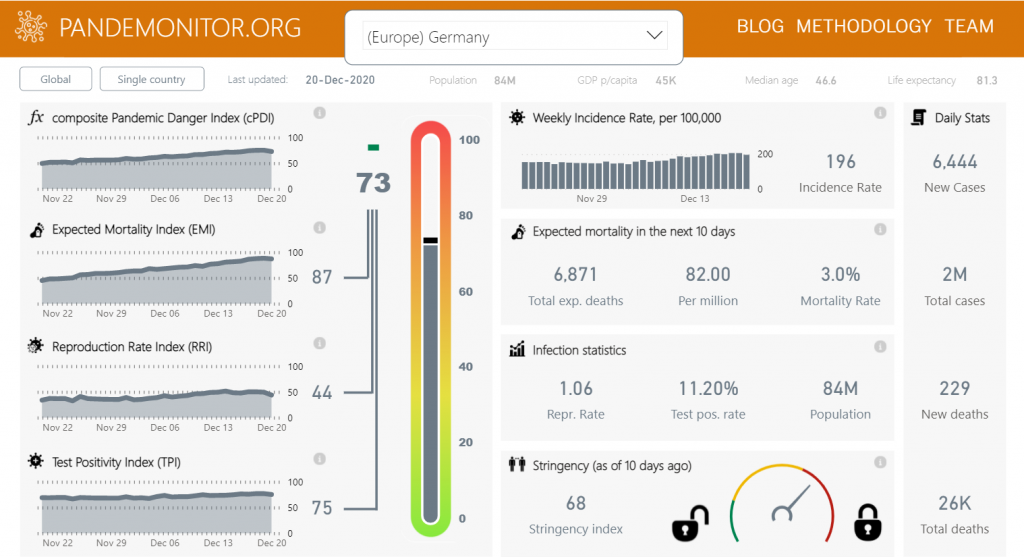
Welcome to our weekly Top Ten update, where we highlight the states most in danger from the pandemic right now. With pandemic numbers now receding in most of the world, the threshold for the top ten dropped from 69 to 67, but six of the former top ten states are still in danger this week, including our new #1 – Peru, where the index added five points to to rising incidence rates and a reproduction rate of 1.15. Two of the newcomers to the list are also Latin American countries which have been among the worst-hit so far – Brazil in 8th place and Mexico which climbed to 4th – but the rest of the list comes from Europe (mostly the Eastern and Balkan regions), including new additions Bulgaria and Northern Macdeonia.
Conspicuously absent from the Top Ten are the United States, which dropped from 10th to 15th place as its cPDI plunged from 69 to 63, as well as the larger European states – Spain at 63 (tied for 15th), Italy at 57 (24th place), Germany and France at 53 (34-35th place) and the UK at 50 (40th place). We’ll soon see if this improvement trend holds.

